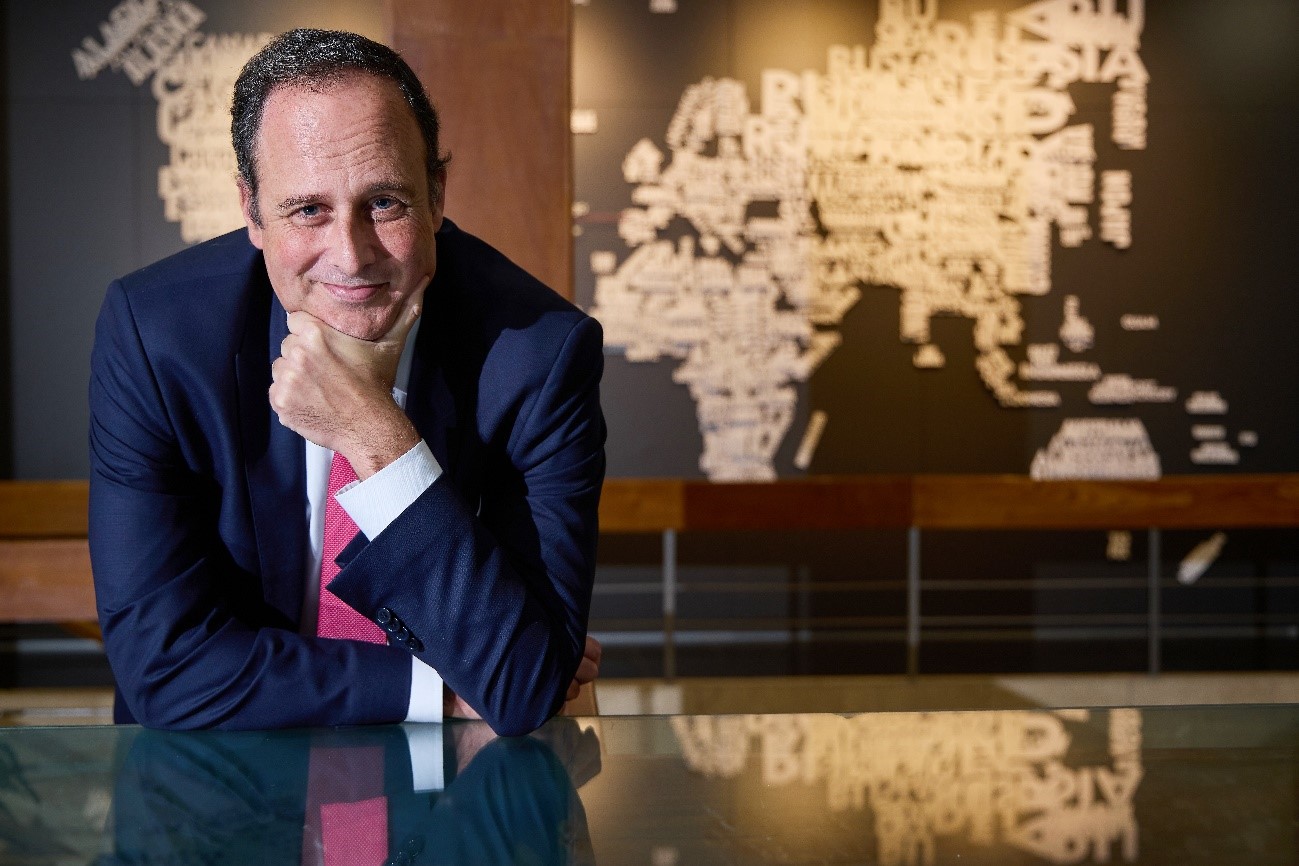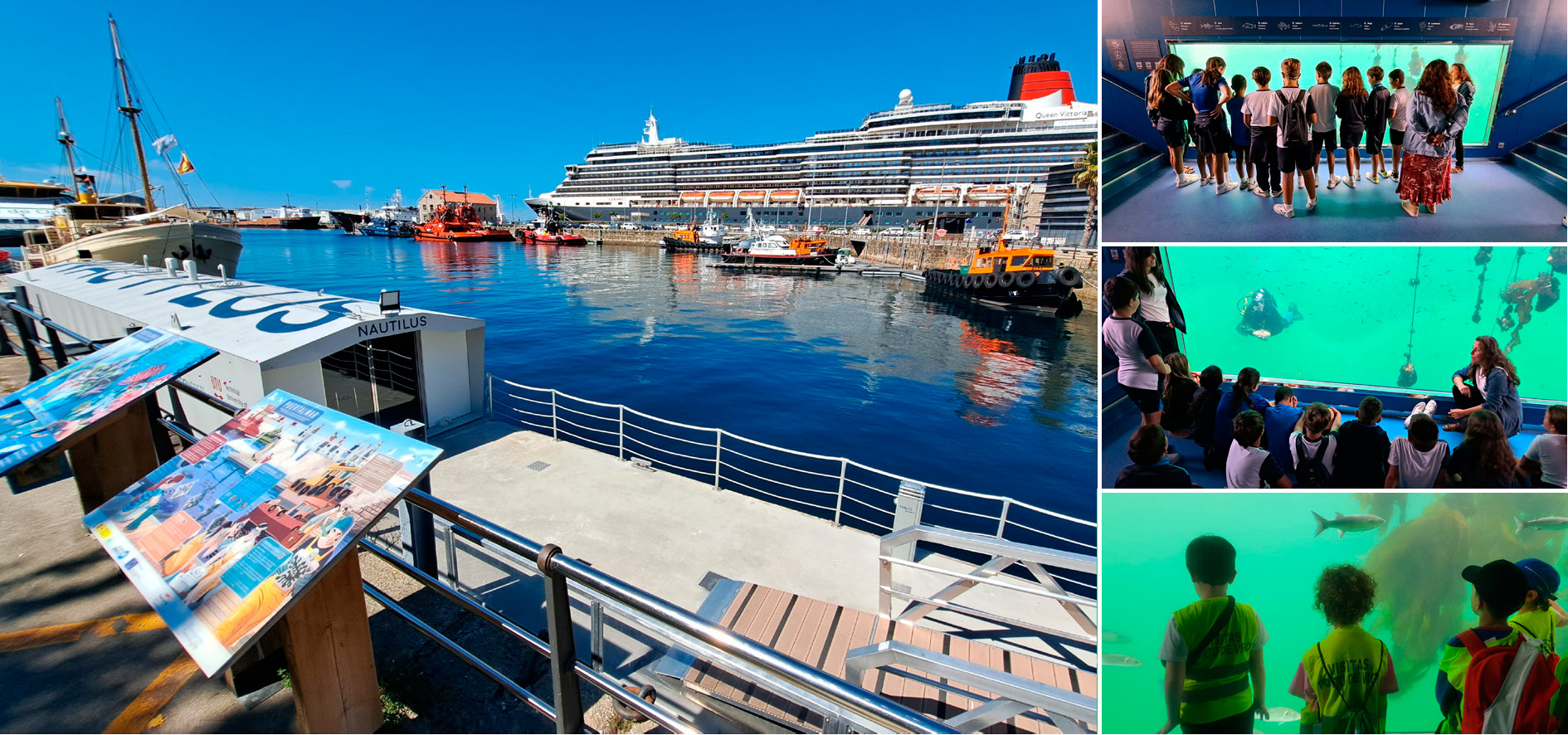
Port Authority / President's Welcome

In 1870, the Port and the Ria of Vigo served as an inspiration for the French writer Jules Verne and were the setting for his novel “Twenty Thousand Leagues Under the Sea”. Jules Verne was a visionary ahead of his time and this fact not only honours but also motivates us to carry out ambitious and sustainable planning for the Port of Vigo for the next 30 years.
At this moment, the Port of Vigo is planting the seeds of what will be the port of the future. We work on innovative and sustainable projects aimed at becoming, in 2030, a Green and Blue Port integrated into the city and into a marine ecosystem. We are transforming our infrastructures into green infrastructures that generate underwater ecosystems. As an example, the one we have created with the “Living Ports” project, where marine life flourishes along innovative structures installed in A Laxe dock, next to Portocultura building, in the very centre of Vigo.
This unique and environmentally friendly technology is contributing to the reduction of the Port's ecological footprint and improving its biodiversity, demonstrating that the installed technology represents a significant ecological improvement compared to standard marine structures. “Living Ports” showcases the next generation of port infrastructure and responsible marine construction methodologies.

In addition, we are developing a port integrated with the city and based on sustainable mobility. In 2024 you will be able to walk or cycle along the entire port edge, from Arenal to Bouzas, thanks to a new 7.5 km long cycle-pedestrian path that we have planned together with the Xunta de Galicia. But we want to go further and turn this entire route into a new blue path that leads to our “Sunset Docks” (Peiraos do Solpor), from where to contemplate a wonderful sunset over the Ría de Vigo and dive to enjoy, once again, underwater life.
Likewise, we are working on the transformation of all ships in the Port of Vigo to new fuels, such as hydrogen. The electrification of the terminals is already beginning to materialize, and with the “Julio Verne” project we will achieve the supply of hydrogen, ammonium, and methanol not only to our ships, but also to land transportation. As the Port of Vigo will have the first publicly accessible green hydrogen dispenser in Galicia and one of the first in Spain. A small step, but very significant, for Galicia's progress in the energy transition. We work hand in hand with the University of Vigo, technology centres and local shipyards designing the ships of the future. We want no sector to be left behind: fishing, port services, local maritime traffic... We believe in a fair transition.
Another great challenge is energy sovereignty. A great challenge due to future electricity needs for new fuels or OPS for ships operating on our port. Our objective is clear: achieving zero emissions by 2030.
But a port must also be a meeting place with the ships that arrive at our coast, but also with the city. A port where no one feels like a stranger, and where everyone is welcome. To achieve this, we have created a Wellness Committee. An organization that was born under the umbrella of the sustainable blue economy strategy that we have led since 2016 and that is based on three fundamental pillars: economic, environmental and, above all, social sustainability. We want to be a friendly and healthy port.
But we must not forget that we are also a port closely linked to the city's economy. Proof of this is the high economic value of the merchandise that is loaded and unloaded year after year in the Port of Vigo and which, in 2022, exceeded 16.2 million euros, which demonstrates the importance of the Port of Vigo for the Galician and national industrial fabric, as a reference in sectors as important as automotive and fishing. In fact, 70% of Galicia's maritime exports are carried out through the Port of Vigo. There is no better thermometer of the economy.
If the Port does well, the companies in Vigo and its area of influence do well. And Galicia too. Let's continue working together to build that port of the future: an efficient, sustainable, environmentally friendly port adapted to new technologies. A Port open to all and integrated into the city, where we are committed to internationalization and attracting talent. An efficient port.
We will have to face the challenges of the future together, identifying needs with active listening to design innovative solutions. We have great challenges and a lot of work ahead of us. Together, we will achieve it.
